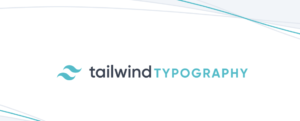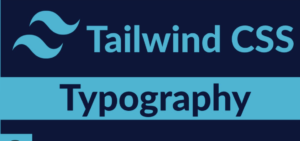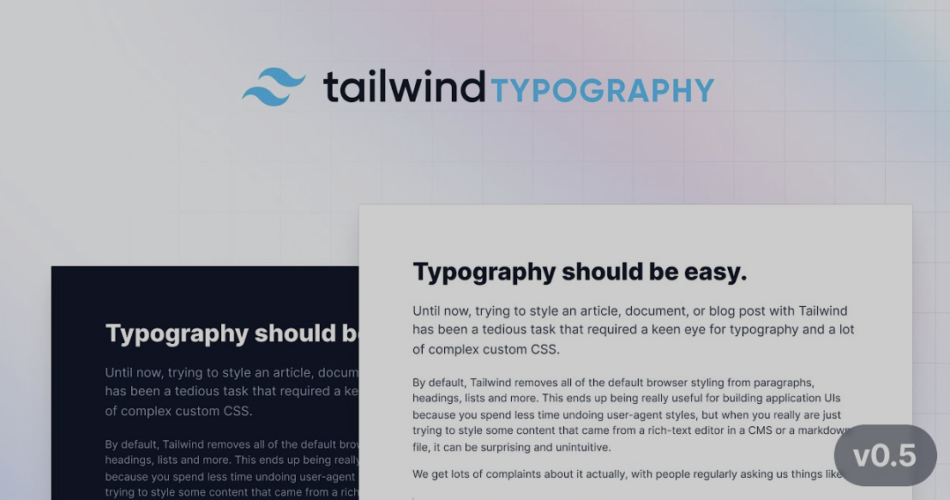Contents
- 1 The Importance of Typography in Web Design
- 2 Introduction to Tailwind CSS
- 3 Understanding the Basics of Typography in Tailwind CSS
- 4 Choosing the Right Fonts for Your Website
- 5 Implementing Typography Styles with Tailwind CSS
- 6 Best Practices for Using Typography in Web Design
- 7 Enhancing SEO with Optimized Typography
- 8 Improving Readability and User Experience with Proper Typography
- 9 Utilizing Responsive Typography with Tailwind CSS
- 10 Advanced Typography Techniques and Customization Options in Tailwind CSS
- 11 Case Studies: Successful Websites Using Tailwind Typography
- 12 Conclusion: Elevating Your Website’s Visual Appeal and SEO Ranking with Tailwind Typography
The Importance of Typography in Web Design
Typography is a fundamental element of web design that can significantly impact the overall user experience and the visual appeal of a website. It plays a crucial role in conveying information, establishing brand identity, and enhancing readability. Effective typography can help create a cohesive and visually striking design, while poor typography can hinder user engagement and negatively affect a website’s search engine optimization (SEO) performance.
In today’s competitive digital landscape, where users have high expectations for visually appealing and user-friendly websites, mastering the art of typography has become increasingly important. By leveraging the power of Tailwind CSS, a popular utility-first CSS framework, web designers and developers can seamlessly integrate and optimize typography to elevate their websites’ visual appeal and boost their SEO rankings.

Tailwind Typography
Introduction to Tailwind CSS
Tailwind CSS is a highly customizable, low-level CSS framework that provides a set of pre-defined utility classes to help developers quickly build responsive and visually appealing user interfaces. Unlike traditional CSS frameworks that offer predefined styles and components, Tailwind CSS encourages a “utility-first” approach, allowing developers to compose custom styles by combining various utility classes directly in their HTML.

Tailwind Typography
One of the key advantages of using Tailwind CSS is its comprehensive set of typography-related utility classes, which enable web designers and developers to effortlessly control and customize the appearance of text elements on their websites. From font families and font sizes to text alignment, letter spacing, and line height, Tailwind CSS offers a wide range of options to ensure optimal typography.
Understanding the Basics of Typography in Tailwind CSS
Tailwind CSS provides a rich set of typography-related utility classes that allow you to control various aspects of your website’s text elements. Some of the most commonly used typography classes in Tailwind CSS include:
- Font Families:
font-sans,font-serif,font-mono - Font Sizes:
text-xs,text-sm,text-base,text-lg,text-xl,text-2xl,text-3xl,text-4xl,text-5xl,text-6xl - Font Weights:
font-thin,font-extralight,font-light,font-normal,font-medium,font-semibold,font-bold,font-extrabold,font-black - Text Alignment:
text-left,text-center,text-right,text-justify - Letter Spacing:
tracking-tighter,tracking-tight,tracking-normal,tracking-wide,tracking-wider,tracking-widest - Line Height:
leading-3,leading-4,leading-5,leading-6,leading-7,leading-8,leading-9,leading-10 - Text Decoration:
underline,line-through,no-underline - Text Transform:
uppercase,lowercase,capitalize,normal-case
By understanding and effectively utilizing these typography-related utility classes, web designers and developers can create visually appealing and highly readable text elements for their websites.
Choosing the Right Fonts for Your Website
Selecting the appropriate font families is a crucial step in establishing the overall visual identity and branding of your website. Tailwind CSS provides a set of predefined font families, including sans-serif, serif, and monospace options, which can serve as a starting point for your typography decisions.
When choosing fonts, consider factors such as readability, brand personality, and compatibility across different devices and browsers. It’s generally recommended to use a maximum of two to three font families on a website to maintain a consistent and harmonious visual hierarchy.
Additionally, Tailwind CSS allows you to easily integrate custom font families, such as those from Google Fonts or other font providers, by using the font-[font-name] utility classes. This flexibility enables you to create a unique and personalized typographic experience for your website.
Implementing Typography Styles with Tailwind CSS
Tailwind CSS makes it easy to apply typography styles to your website’s text elements. By combining the various utility classes mentioned earlier, you can quickly and efficiently style your headings, paragraphs, links, and other text-based components.
For example, to create a styled heading, you might use the following Tailwind CSS classes:
<h1 class="text-5xl font-bold text-gray-900 leading-tight mb-4">
Mastering the Art of Tailwind Typography
</h1>
In this example, the text-5xl class sets the font size to a large 5xl, font-bold applies a bold font weight, text-gray-900 sets the text color to a dark gray, leading-tight adjusts the line height, and mb-4 adds a bottom margin of 4 units.
By experimenting with different combinations of Tailwind CSS typography classes, you can easily create visually appealing and consistent typography throughout your website.
Best Practices for Using Typography in Web Design
To ensure optimal typography on your website, consider the following best practices:
- Establish a Typographic Hierarchy: Utilize different font sizes, weights, and styles to create a clear hierarchy that guides users through the content.
- Maintain Consistent Spacing: Pay attention to line height, letter spacing, and paragraph spacing to ensure a balanced and harmonious layout.
- Optimize for Readability: Choose font families and sizes that are easy to read, especially for body text. Avoid using overly decorative or script-like fonts for lengthy passages.
- Ensure Accessibility: Ensure sufficient contrast between text and background colors to meet accessibility guidelines and improve readability for all users.
- Implement Responsive Typography: Use Tailwind CSS’s responsive utilities to adjust typography styles based on different screen sizes, ensuring a seamless user experience across devices.
- Leverage Typographic Hierarchy for SEO: Properly structure your content with appropriate heading tags (e.g.,
<h1>,<h2>,<h3>) to improve the semantic structure and enhance your website’s SEO.
By following these best practices and leveraging the power of Tailwind CSS, you can create a visually stunning and user-friendly website that captivates your audience and boosts your search engine rankings.
Enhancing SEO with Optimized Typography
Effective typography not only enhances the visual appeal of your website but also plays a crucial role in improving its search engine optimization (SEO) performance. Search engines, such as Google, prioritize websites with well-structured and readable content, as this provides a better user experience for their users.
By utilizing Tailwind CSS’s typography-related utility classes, you can optimize your website’s content for better SEO in the following ways:
- Semantic Markup: Properly structure your content with appropriate heading tags (
<h1>,<h2>,<h3>, etc.) to create a clear hierarchical structure, which helps search engines understand the organization and importance of your content. - Readability and Accessibility: Ensure your website’s typography is easy to read and accessible to all users, including those with visual impairments. This not only improves the user experience but also signals to search engines that your content is high-quality and valuable.
- Responsive Design: Implement responsive typography using Tailwind CSS’s utility classes to ensure your website’s text elements are optimized for various screen sizes and devices. This helps search engines understand that your website provides a seamless experience across different platforms.
- Keyword Optimization: Strategically incorporate relevant keywords into your website’s headings, subheadings, and body text to improve its relevance and visibility in search engine results.
- Content Formatting: Use Tailwind CSS’s typography classes to format your content in a visually appealing and scannable manner, making it easier for users and search engines to quickly understand the key points and takeaways.
By focusing on optimized typography, you can create a website that not only looks visually stunning but also resonates with search engines, leading to improved rankings and increased organic traffic.
Improving Readability and User Experience with Proper Typography
Effective typography can significantly enhance the readability and overall user experience of your website. By carefully selecting and implementing typography styles using Tailwind CSS, you can ensure that your content is easy to consume and engaging for your visitors.
Some key aspects of improving readability and user experience with Tailwind CSS typography include:
- Font Selection: Choose font families that are legible and appropriate for the content and brand of your website. Avoid using overly decorative or difficult-to-read fonts, especially for body text.
- Font Sizing: Utilize Tailwind CSS’s font size utility classes to ensure your headings, subheadings, and body text are sized appropriately for optimal readability.
- Line Height and Spacing: Adjust the line height and letter spacing using Tailwind CSS’s
leading-*andtracking-*utility classes to create a comfortable and visually appealing reading experience. - Text Alignment and Justification: Use Tailwind CSS’s text alignment utility classes to ensure your content is consistently aligned, whether it’s left-aligned, centered, or justified.
- Color Contrast: Ensure sufficient contrast between your text and background colors to improve readability and accessibility, especially for users with visual impairments.
- Responsive Typography: Leverage Tailwind CSS’s responsive typography capabilities to adjust your website’s text elements based on different screen sizes, ensuring a seamless user experience across devices.
By focusing on these typography-related aspects and leveraging the power of Tailwind CSS, you can create a website that is not only visually appealing but also highly readable and user-friendly, ultimately enhancing the overall experience for your visitors.
Utilizing Responsive Typography with Tailwind CSS
In the modern era of responsive web design, ensuring that your website’s typography adapts seamlessly across various devices and screen sizes is crucial. Tailwind CSS provides a robust set of responsive typography utility classes that allow you to easily implement and customize responsive typography for your website.
Some of the key responsive typography features in Tailwind CSS include:
- Responsive Font Sizes: Tailwind CSS offers a range of font size utility classes that can be applied conditionally based on screen size, such as
text-sm,text-base,text-lg,text-xl, and their responsive counterparts likesm:text-sm,md:text-base,lg:text-lg, andxl:text-xl. - Responsive Font Weights: Similar to font sizes, Tailwind CSS provides responsive font weight utility classes, enabling you to adjust the font weight based on screen size, such as
font-normal,font-medium,font-bold, and their responsive variants. - Responsive Line Height: Tailwind CSS’s responsive
leading-*utility classes allow you to control the line height of your text elements across different screen sizes, ensuring optimal readability. - Responsive Letter Spacing: The framework’s
tracking-*utility classes can be used to adjust the letter spacing responsively, helping to create a harmonious and visually appealing layout on various devices.
By leveraging these responsive typography features in Tailwind CSS, you can create a website that seamlessly adapts to different screen sizes and devices, providing an exceptional user experience and ensuring your content remains highly readable and accessible to all visitors.
Advanced Typography Techniques and Customization Options in Tailwind CSS
While the built-in typography utility classes in Tailwind CSS provide a solid foundation for creating visually appealing and responsive websites, the framework also offers advanced customization options to further enhance your typography.
Some of the advanced typography techniques and customization options in Tailwind CSS include:
- Custom Font Families: Tailwind CSS allows you to easily integrate custom font families, such as those from Google Fonts or other font providers, by using the
font-[font-name]utility classes. - Font Variant Settings: Tailwind CSS provides utility classes to control font variant settings, such as
font-normal,font-italic,font-small-caps, andfont-numeric, enabling you to fine-tune the appearance of your text elements. - Text Decoration: The framework offers utility classes to apply various text decorations, including
underline,line-through, andno-underline, allowing you to create visually distinctive links, headings, and other text elements. - Text Transformation: Tailwind CSS’s text transformation utility classes, such as
uppercase,lowercase,capitalize, andnormal-case, enable you to easily control the capitalization of your text. - Custom Typography Utilities: If the built-in typography utility classes don’t fully meet your design requirements, you can create your own custom Tailwind CSS utility classes to further extend and personalize the typography of your website.
By exploring these advanced typography techniques and customization options, you can truly unlock the full potential of Tailwind CSS and create a website that stands out with a unique and visually captivating typographic experience.
Case Studies: Successful Websites Using Tailwind Typography
To illustrate the power of Tailwind CSS typography, let’s examine a few real-world examples of websites that have effectively leveraged this framework to enhance their visual appeal and user experience.
- Airbnb: Airbnb’s website features a clean and modern design that heavily relies on Tailwind CSS typography. The website uses a consistent font family, carefully chosen font sizes, and responsive typography to create a visually appealing and highly readable user interface.
- Stripe: Stripe, a leading digital payment processing platform, utilizes Tailwind CSS to ensure a cohesive and visually striking typographic experience across its website. The website’s typography is well-structured, with clear hierarchies and optimal readability.
- Tailwind CSS Website: The official Tailwind CSS website itself is a prime example of how the framework’s typography capabilities can be leveraged to create a visually stunning and user-friendly experience. The website showcases the versatility of Tailwind CSS typography through its consistent branding, responsive design, and easy-to-read content.
These case studies demonstrate how Tailwind CSS’s comprehensive typography features can be effectively applied to create websites that not only look visually appealing but also provide an exceptional user experience, ultimately contributing to their overall success and performance.
Conclusion: Elevating Your Website’s Visual Appeal and SEO Ranking with Tailwind Typography
In the ever-evolving world of web design, mastering the art of typography has become increasingly crucial for creating visually stunning and user-friendly websites. By leveraging the power of Tailwind CSS, web designers and developers can seamlessly integrate and optimize typography to elevate their websites’ visual appeal and boost their SEO rankings.
Through a deep understanding of Tailwind CSS’s typography-related utility classes, the ability to choose the right fonts, and the implementation of best practices for web typography, you can craft websites that captivate your audience and provide an exceptional user experience. Additionally, by aligning your typography with SEO principles, you can further enhance your website’s visibility and ranking in search engine results.
Remember, effective typography is not just about aesthetics; it’s a fundamental element that can significantly impact the overall success of your website. By embracing the strategies and techniques outlined in this guide, you can unlock the full potential of Tailwind CSS typography and elevate your website to new heights of visual appeal and SEO performance.
